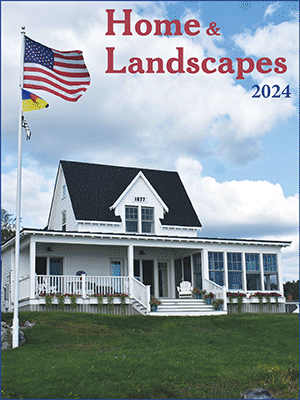Bigelow to break ground on algae ‘greenhouse’
Bigelow Laboratory for Ocean Sciences will be breaking ground on a new Marine Algal Research and Innovation Accelerator (MARIA) on its campus in East Boothbay later this spring. The program’s goal is to find commercial applications for marine algae use, said Darlene Crist, Director of Communications for Bigelow Laboratory for Ocean Sciences.
Crist said that Maine Technology Institute provided $5,000 in seed grant funds. Another $100,000 was provided by the federal government through the Department of Agriculture, and Maine Community Foundation loaned the facility $300,000 to get the greenhouse built and operational.
The algal facility will also capitalize on a prior relationship between Mike Lomas, director of the National Center for Marine Algae at Bigelow, and Field Energy LLC, which is a private company trying to develop a process to improve fatty acid products. These acids are important in brain development in children, and they also reduce cardiovascular disease in adults. Lomas’ team and Field Energy had been working for some time on the research, together with Bigelow Analytic Services.
The funding enabled the partnership to provide “one stop shopping” for research and development of algae products. The pilot project, which will be online in the fall, should be able to grow enough algae to explore new commercial products, benefiting the world’s people, as well as aquaculture in Maine.
Lomas said that MARIA will not only grow algae, but will also be a center for developing universal algal standards, and exploring new ways that algae can be incorporated into products.
The support from MTI, the Department of Agriculture, and Maine Community Foundation’s loan from its Food, Fisheries, and Farms program will provide for the construction of a roughly 3,000 square foot pilot-scale production greenhouse on Bigelow Laboratory’s ocean science campus on the Damariscotta River.
Lomas’ team has already constructed a mini-scale production facility in the Seawater Suite at Bigelow Laboratory to test growth processes for scaling up once the larger facility is operational.
“My hope is that the greenhouse will serve as a flywheel that drives innovation. It will accelerate the process of taking ideas for natural products created using micro and macro algae and turning them into concepts,” added Lomas. “The greenhouse will allow us to help other entrepreneurs regardless of where they might be in the process.”
Because of the quantity of algae it will be able to produce, MARIA also will be developing algal standards by providing a consistent source of material. The ultimate goal is to provide not only algae that are predictable, but also to assist Maine’s young aquaculture community to expand into fields they may not have tried before.
Maine is something of the epicenter for non-fisheries aquaculture in the United States, and the midcoast is the hub of that effort, according to Maine Aquaculture Innovation Center, an industry group that represents aquaculture businesses in Maine. Locally, Maine Fresh Sea Farms in Bristol produces three kinds of seaweed as food. Marshall Wharf Brewing in Belfast uses some of its sugar kelp to make beer. Pemaquid Mussel Farm is also growing seaweed along with its mussel beds. Statewide, there are already 20 companies that harvest seaweed, bringing in some 17.7 million pounds in 2014, the most ever recorded, according to the group.
But in addition to these “macro algaes,” there are many microscopic algaes, too. Some have been harvested for many years, such as the shells of diatoms, pulverized and used as a natural, nontoxic pesticide known as diatomaceous earth. Red algaes are the basis for agar, used in laboratories as a culture medium, and carrageenin, a compound used as a stabilizing agent in foods, pharmaceuticals, and paints. Brown algaes are also used as thickening agents and stabilizing agents. In addition to making stable fatty acids such as Omega 3s, microalgae may provide an important fuel source in years to come.
Event Date
Address
United States
























